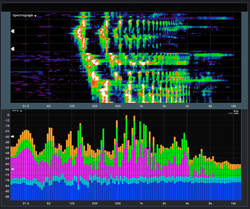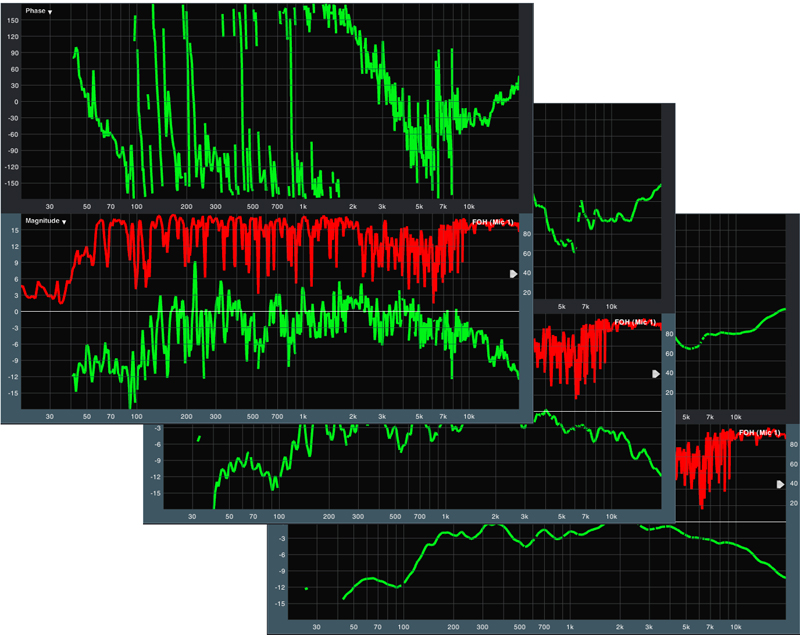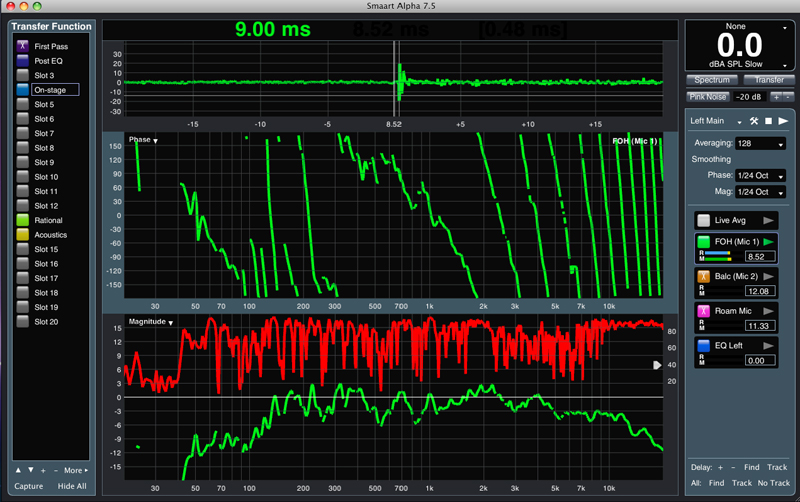
Real-Time Mode, Transfer Function Engine (Frequency Response):
• New MTW (Multi-Time Window) FFT provides better than 48th octave frequency resolution from 60 Hz up. (MTW takes the place of FPPO)
• Improved fractional-octave smoothing provides better trace readability
• New averaging algorithm greatly enhances trace stability
• Separate smoothing control for Phase and Magnitude traces
• Overload protection – TF average rejects data during input clip
.
• Multi-channel input allows for multiple, simultaneous transfer functions as well as the calculation of “live-averages” of those measurements
• Groups of Transfer Function measurements can be configured for managing multi-channel system alignment
.
.
Live IR – top data panel – shows the TF measurement in a linear IR view.
Live IR
• Window centered at the TF’s delay
• User-selectable FFT size up to 32k
• FIFO Averaging up to 8 averages
When engaged, Delay Tracking automatically measures and adjusts the TF delay for every measurement cycle. The microphone can be moved, and Smaart will track the delay change.
.
Impulse Response Mode
Smaart v7’s Impulse Response Mode has been significantly expanded to include much of the functionality from the AcousticTools software package, with the intent of giving a user a robust and intuitive set of tools for making and analyzing Impulse Response measurements.



Also watch for additional impulse response analysis features to be slip-streamed into Smaart 7 over the next year in the course of normal maintenance updates.
Smaart v.7: New code base, modern object-oriented architecture, enhanced data acquisition, improved GUI, enhanced measurement engines, and brand new features like delay tracking. All backed by Rational Acoustics, a dedicated, independent company focused solely on the development and support of Smaart.
.
Jamie Anderson is a founding member of Rational Acoustics, which provides training courses, hardware products/packages, and professional consulting for sound system measurement, analysis, and alignment. He has been teaching and working in the field of sound system engineering, measurement and alignment for almost 20 years. During his career, Jamie has worked as a technical support manager and SIM instructor for Meyer Sound Laboratories, as a system engineer on tour for A-1 Audio (kd Lang) and UltraSound (Dave Matthews Band), and most recently, as a product manager and instructor for SIA and EAW.




